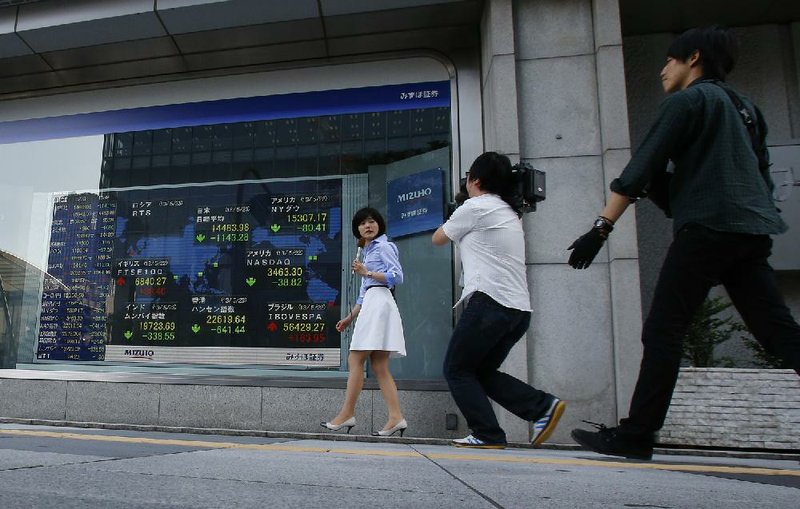TOKYO - Japan’s financial markets gyrated wildly Thursday, underscoring the vulnerability of its economy to a loss of investor confidence as Prime Minister Shinzo Abe attempts shock monetary easing to end two decades of stagnation.
Interest rates, or yields, on 10-year Japanese government bonds briefly topped 1 percent for the first time in a year Thursday, after news that some U.S. Federal Reserve officials are willing to scale back the American central bank’s stimulus efforts as soon as June if the economy perks up.
Thursday’s spike, which came despite the Bank of Japan’s aggressive efforts to keep borrowing costs down, is unnerving some investors at a time when Japan’s already overburdened government finances are vulnerable to rises in interest rates. A sustained rise would push up the cost of borrowing for the government.
“Japan really has a long term debt problem,” said Franklin Allen, a professor at the Wharton School at the University of Pennsylvania. “There will be a financial stability problem” if long-term government bond yields rise to 2.5 percent to 3 percent, he said.
The bond gyrations, along with fresh data showing China’s recovery is faltering, led to a 7.3 percent tumble in the benchmark Nikkei 225 stock index, as investors cashed in on recent sharp gains. The Nikkei lost 1,143 to 14,483.98, its worst drop since the March 2011 tsunami disaster.
The Bank of Japan has been grappling with unexpected swings in the government bond market since early April, when its new governor, Haruhiko Kuroda, announced a drastic shift in policy aimed at doubling the amount of cash circulating in Japan’s economy. That move should - in theory - stop yields from rising. The central bank’s goal is to attain a 2 percent inflation target within two years, the main tenet of Abe’s economic program, dubbed “Abenomics.”
“We’ve never seen this volatility … that we’re seeing today in the Japanese market,” said Ken Courtis, a former Goldman Sachs vice chairman and investment banker.
Since taking office in December, Abe also has raised government spending and promised changes to make the world’s No. 3 economy more competitive. Like the Fed, the Bank of Japan is buying huge amounts of government bonds, seeking to keep interest rates low to encourage people and businesses to borrow and spend more.
The government has yet to achieve its aim of breaking out of a deflationary rut of sagging prices that has slowed investment and is thought to be discouraging consumers from spending.
Since rising prices would mean money spent now will go further than later, the government hopes to get the Japanese to step up spending, especially for big-ticket items like cars and houses.
The effort to “reflate” the economy has pushed share prices sharply higher, while the value of Japan’s currency has fallen by 25 percent against the U.S. dollar since late last year. The yen was trading at about 101.8 to the dollar Thursday after briefly passing 103 to the dollar.
Some say the success in increasing stock prices and weakening the yen could sap momentum for difficult economic changes that are crucial to the success of Abenomics.
Abe also wants to change Japan’s constitution which enshrines pacifism.
“The incentive to carry out structural reforms is weakening. There might be a sense that nothing more has to be done,” said Shinichi Ichikawa, chief market strategist at Credit Suisse in Tokyo.
“It requires a lot of strength for the prime minister to change the constitution. And of course a lot of power is needed to start the structural reform of the economy. I don’t believe that one prime minister can achieve both at the same time.”
Business, Pages 27 on 05/24/2013

